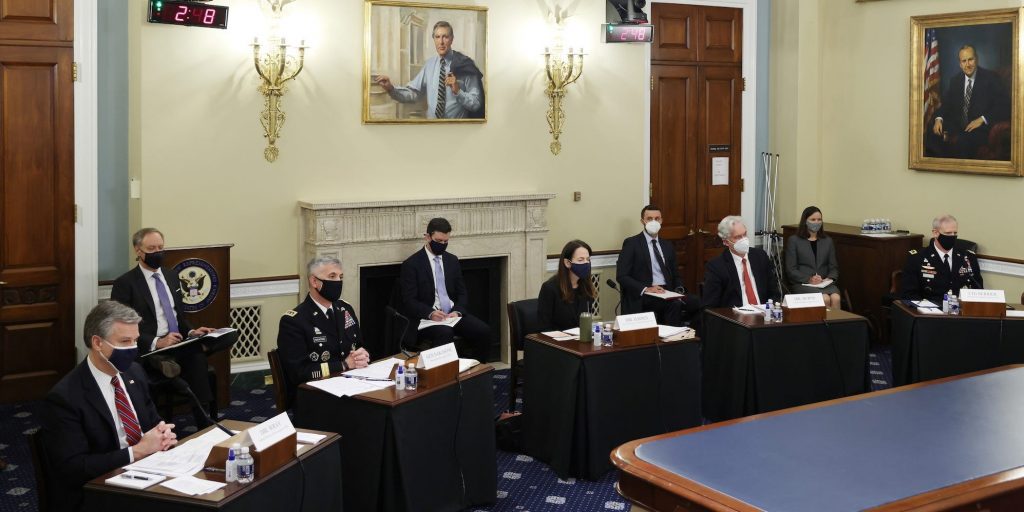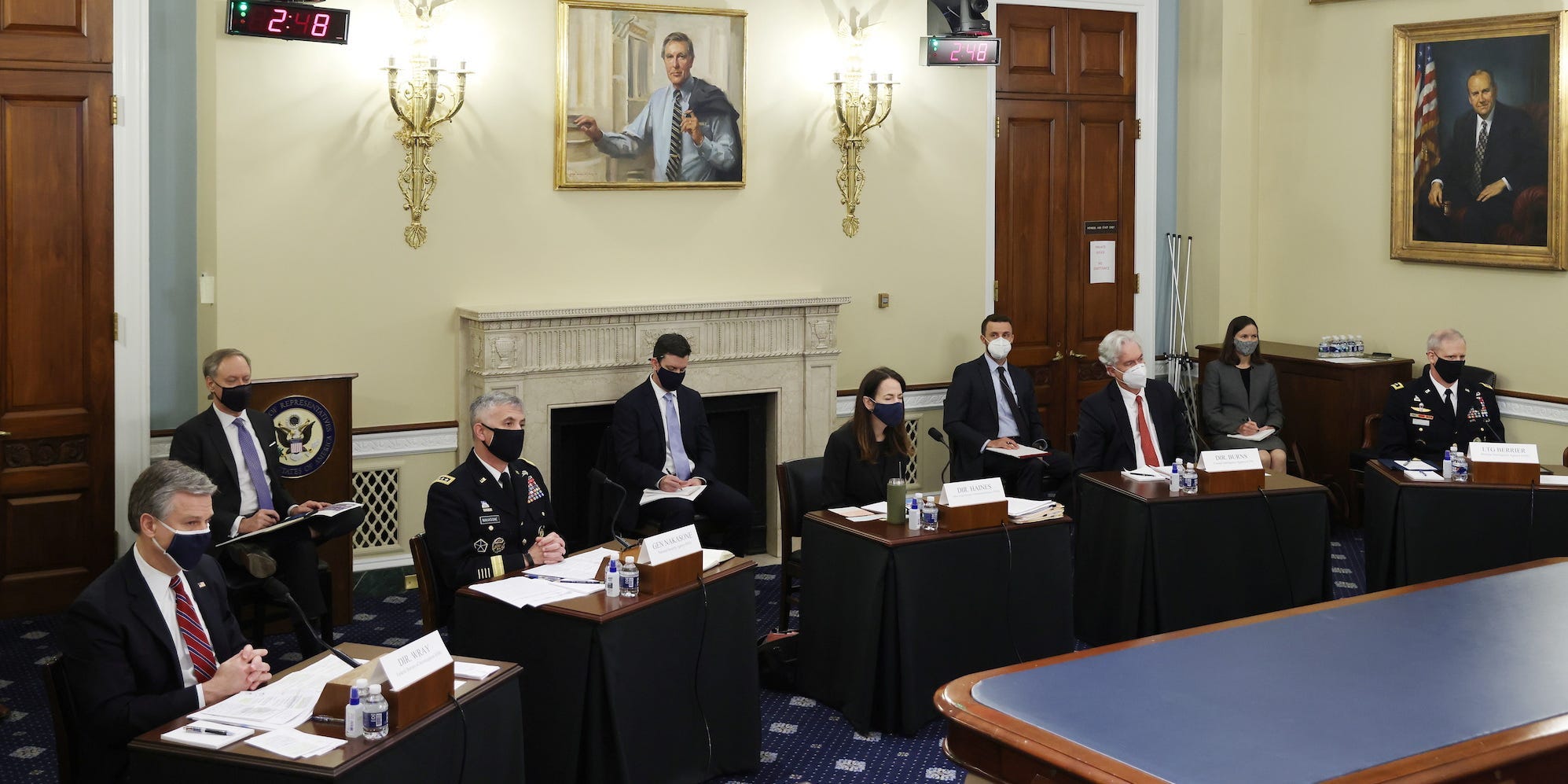
Tasos Katopodis/Pool via REUTERS
- Every four years, US intelligence agencies compile scenarios that policymakers may face in 20 years.
- Some of the scenarios are devastating, while others resemble a future version of our current world.
- See more stories on Insider's business page.
What will the world look like in 2040?
Peaceful coexistence between the US and China based on mutual economic benefit? A chaotic and divided world trying to recover from major natural disasters caused by climate change? Or a catastrophic World War III?
These are some of the questions the US Intelligence Community asks itself when it prepares one of the most important and interesting national security reports.
Global Trends
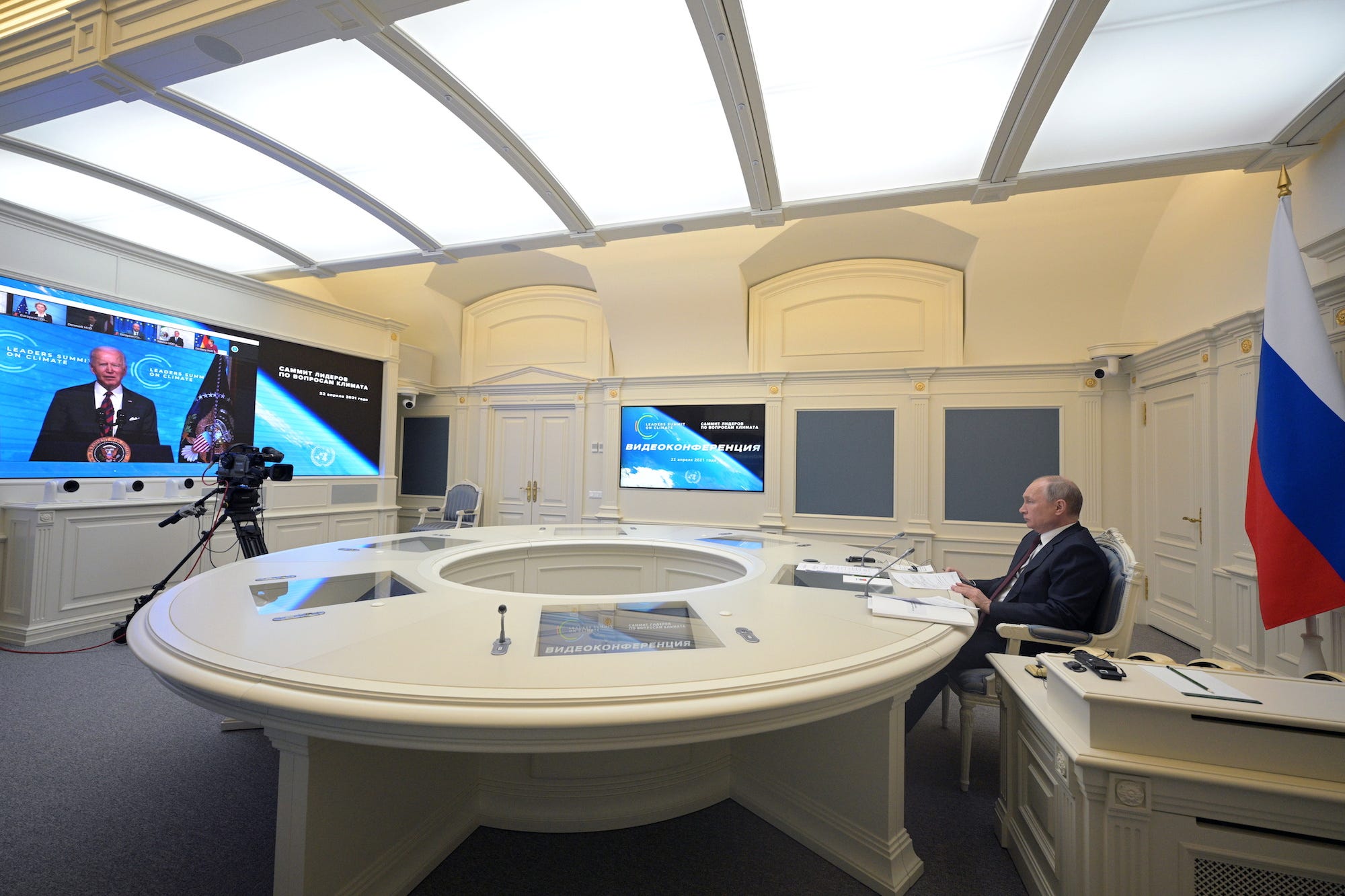
Sputnik/Alexei Druzhinin/Kremlin via REUTERS
Published every four years since 1997, the Global Trends Report is the Intelligence Community's overarching assessment of geopolitical trends. It aims to describe realistic scenarios that policymakers will face 20 years from now.
As the foreword of this year's report, the seventh iteration, states, the goal of the Intelligence Community isn't to say specifically what the world will look like in 2040 but rather to highlight issues and trends that might swell in importance and that current and future administrations might find useful when creating national-security strategies.
The publication of this version of the report almost coincided with the Intelligence Community's annual threat assessment, in which the Director of National Intelligence and the heads of the CIA, NSA, FBI, and the Defense Intelligence Agency provide an assessment of threats the US is or will be facing in the next year.
There are several steps behind the publication of the Global Trends Report. The authors examine and reevaluate past reports and adjust their approach accordingly while also incorporating new collection and analysis methods.
In addition, they seek both internal and external feedback. Indeed, open dialogues with the academic community and the private sector are key to the report.
Interestingly, the authors also gathered opinions and perspectives from a wide range of domestic and international sources, including American high-school students, African civil-society organizations, and Asian businesses.
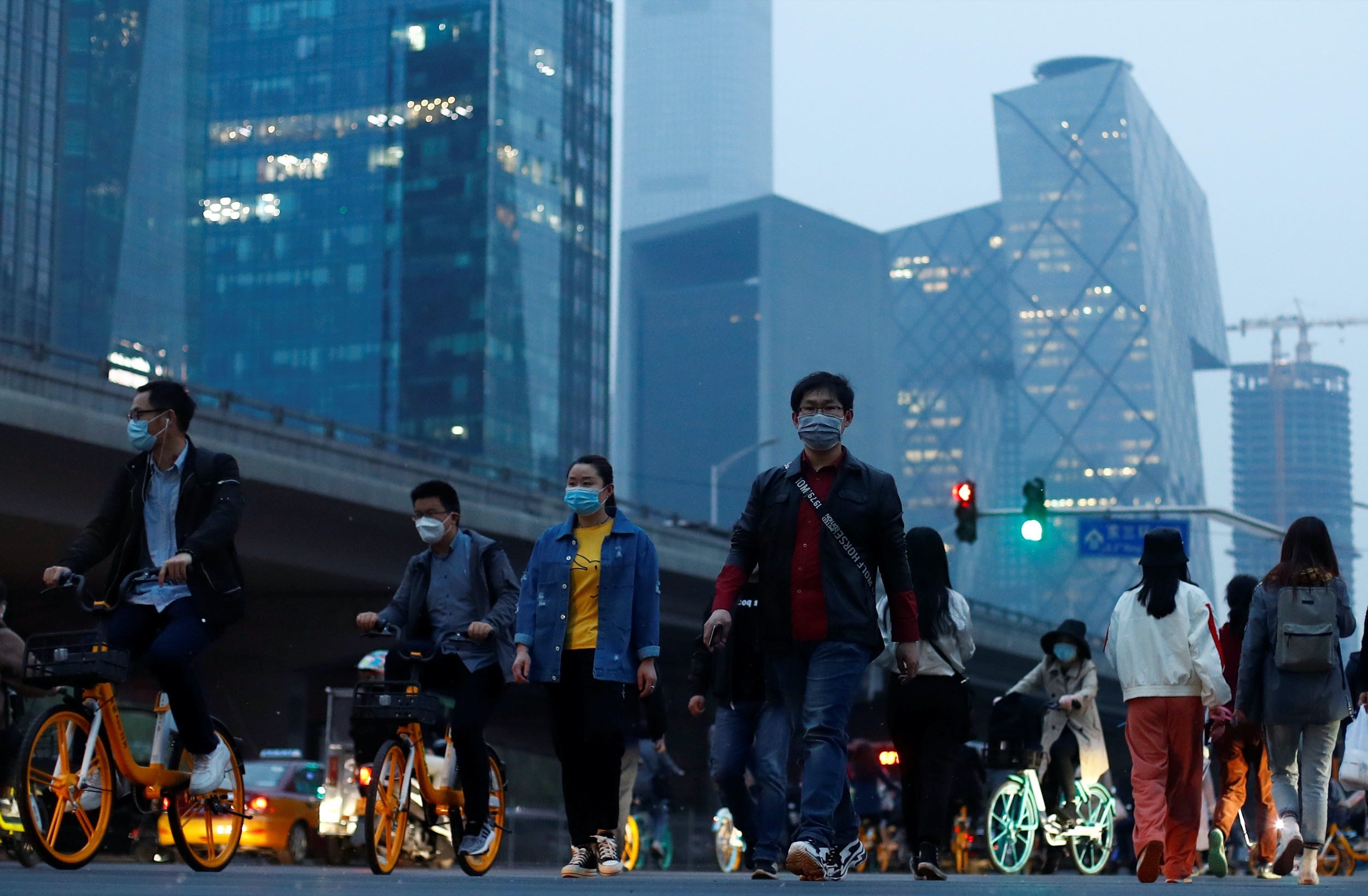
REUTERS/Thomas Peter
Moreover, the report's authors first studied several structural forces - namely demographics, environment, economics, and technology - and how they and other external factors, including the all-important human behavior, might affect the geopolitical scene.
In addition, they calculated how some shared global challenges, including climate change, disease, financial crises, and technology disruptions, will potentially affect all nations.
But it is important to highlight what intelligence analysis is and isn't.
Good analysis aims to provide a solid understanding of an issue and likely outcomes, thereby informing the actions of policymakers. Conversely, analysis isn't a magic ball that can see into the future and tell whether North Korea is going to launch a nuclear missile at Seattle.
Sherman Kent, a legendary CIA analyst and founder of the Office of National Estimates, put it best when he said that, "Intelligence does not claim infallibility for its prophecies. Intelligence merely holds that the answer which it gives is the most deeply and objectively based and carefully considered estimate."
The latest iteration of the Global Trends Report details five potential geopolitical scenarios for 2040 that cover a wide spectrum: Some are devastating, while others resemble a future version of our current world.
Here is a brief breakdown of the scenarios.
Renaissance of Democracies
In this scenario, open democracies across the world are seeing a resurgence led by the US and its allies.
Rapid technological advancements and increased cooperation between the public and private sectors are facilitating a rapid expansion of the global economy, raising more people from poverty, improving their quality of life, and involving them in their societies.
Conversely, societies with autocratic control over their citizens, such as China and Russia, are falling behind as their ability to innovate stagnates.
A World Adrift
In a very gloomy scenario, the world is a directionless, chaotic, and volatile place, as institutions and international norms and rules have collapsed and only a few countries continue to abide by them.
The major oil-producing countries, such as Saudi Arabia, the United Arab Emirates, and Angola, are encountering economic stagnation, which has stoked societal divisions and political instability. China's ascendancy continues as the West falls behind.
In this volatile world, many global challenges are left unaddressed.
Competitive Coexistence
In a scenario that resembles today, the US and China are leading the world through a robust trading relationship that prioritizes economic growth.
Great-power competition continues and is still focused on geopolitical influence, strategic advantage, and technological supremacy, while each country promotes its governance model-liberal democracy in the case of the US vs. communist capitalism in the case of China.
Despite the ongoing geopolitical tensions, a major war is unlikely, and global problems, such as climate change and water shortages, are managed through international cooperation and technological advances.
Separate Silos
In this gloomy future, the geopolitical scene is fragmented into several economic and security blocs of varying importance and strength.
The US, China, Russia, and the EU continue to be the major players, but they have been augmented by a few regional powers-presumably South Africa, India, Brazil, and even Nigeria. The blocs are self-sufficient, with reoriented supply chains and a focus on resiliency and security.
Separate sovereign cyber enclaves control the flow of information, and international trade has been disrupted. Developing countries are unwitting observers.
Tragedy and Mobilization
This scenario envisions the aftermath of a devastating global food shortage caused by climate change.
A global coalition led by the EU and China is working with non-government organizations and multilateral institutions to implement comprehensive changes to deal with climate change, depletion of natural resources, and poverty.
Rich countries are helping emerging nations deal with the crisis and transition to low-carbon economies through aid programs and transfers of technology.
Lessons for the future
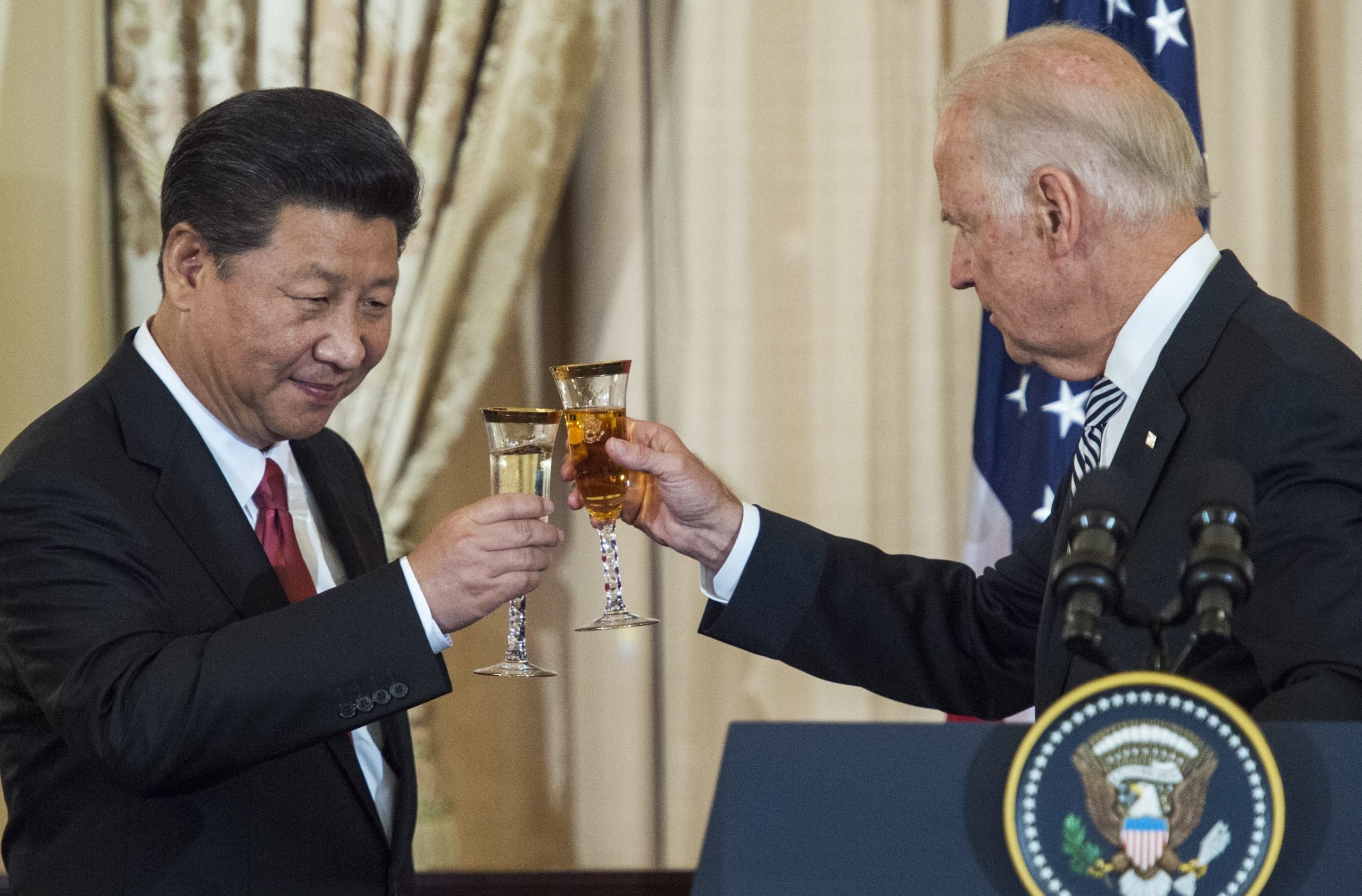
PAUL J. RICHARDS/AFP via Getty Images
Although scenarios such as "Tragedy and Mobilization," "Separate Silos," and "A World Adrift" paint a dark future, they are realistic in the sense that they account for current or imminent external factors, such as a growing world population or the depletion of natural resources, that will result in global emergencies if left unaddressed.
Conversely, "Competitive Coexistence" is essentially a future version of our current world, although with a more potent China. A "Renaissance of Democracies" is the better outcome for the US and the West, but effecting it would require investments in the institutions and values that differentiates those societies from autocratic states like China and Russia.
Stavros Atlamazoglou is a defense journalist specializing in special operations, a Hellenic Army veteran (national service with the 575th Marine Battalion and Army HQ), and a Johns Hopkins University graduate.
